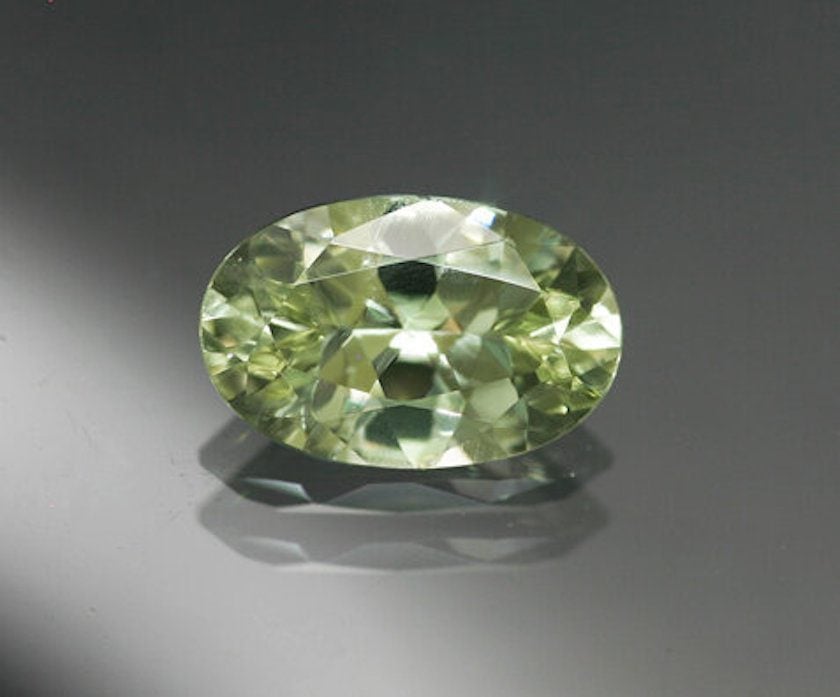Rhodizite Value, Price, and Jewelry Information
Rhodizite is tough enough to make an excellent jewelry stone. However, it's quite a rare mineral. Faceted specimens are extremely rare and usually small and pale in color.
2 Minute Read
Rhodizite is tough enough to make an excellent jewelry stone. However, it’s quite a rare mineral. Faceted specimens are extremely rare and usually small and pale in color.
Start an IGS Membership today
for full access to our price guide (updated monthly).Rhodizite Value
What is Rhodizite?
Rhodizites and londonites form a mineral series. Recognized as a mineral species in 1999, londonite is the cesium-dominant (Cs) end member. Rhodizite is the potassium-dominant (K) end member. Stones previously identified as rhodizites may in fact be londonites or fall between the two end members of the series.
Does Rhodizite Make a Good Jewelry Stone?
With a hardness range of 8-8.5, rhodizite gems surpass popular jewelry stones such as quartz and topaz in scratch resistance. Combined with a lack of cleavage, these gems would make excellent choices for almost any type of jewelry use. They can show the same adamantine luster as diamonds, too.
However, as jewelry stones, rhodizites do have a limitation. Both irradiated and natural color rhodizites will fade slowly with prolonged exposure to sunlight. Irradiated stones fade somewhat after one week and more noticeably after nine days. After three weeks of exposure, they become nearly colorless. Natural stones take somewhat longer to fade. Therefore, store your rhodizite gems or jewelry pieces out of sunlight and save them for evening wear.
Is Rhodizite Hazardous?
In metal form, cesium is toxic, and the isotopes produced as nuclear waste or for medical purposes are radioactive. However, naturally occurring cesium, such as that found in londonite or londonite-rhodizite series gems, should pose no risks.
Identifying Rhodizites
Rhodizites may show anomalous double refraction (ADR).
Under physical pressure, this gem generates an electric charge. This is known as known the piezoelectric effect. This gem also exhibits the pyroelectric effect. When heated, it generates an electrical charge.
Are There Synthetic Rhodizites?
There are no known synthetic rhodizites.
Irradiated Rhodizites
Radiation treatment can turn colorless rhodizites yellow to greenish yellow with moderate to strong saturation. However, prolonged exposure to sunlight will cause both irradiated and natural colors to fade. See the "Care" section below.
Where are Rhodizites Found?
Only Madagascar has produced gem-quality crystals of rhodizite and londonite. Antandrokomby, as well as other localities there, have yielded yellowish and greenish crystals.
Locations near Mursinsk, Russia have produced rose red-colored crystals.
This rare mineral also occurs in the state of Wisconsin, USA.
Rhodizite Stone Sizes
Madagascar material in fragments clean enough to cut has provided gemstones up to about three carats. However, the extremely rare gemstones that exceed two carats usually contain many inclusions. Most faceted rhodizites range in size from half to one carat.
- Smithsonian Institution (Washington, DC): 0.5 (Madagascar).
How to Care for Rhodizites
Rhodizites don't require any special cleaning procedures. However, keep in mind that highly included gems may react very badly to mechanical cleaning systems like steam or ultrasound. If you have any doubts about your gems, stick to using a soft brush, mild detergent, and warm water. Consult our gemstone jewelry cleaning guide for more recommendations.
Joel E. Arem, Ph.D., FGA
Dr. Joel E. Arem has more than 60 years of experience in the world of gems and minerals. After obtaining his Ph.D. in Mineralogy from Harvard University, he has published numerous books that are still among the most widely used references and guidebooks on crystals, gems and minerals in the world.
Co-founder and President of numerous organizations, Dr. Arem has enjoyed a lifelong career in mineralogy and gemology. He has been a Smithsonian scientist and Curator, a consultant to many well-known companies and institutions, and a prolific author and speaker. Although his main activities have been as a gem cutter and dealer, his focus has always been education. joelarem.com
International Gem Society
Related Articles
Black Diamond Value, Price, and Jewelry Information
Chameleon Diamond Value, Price, and Jewelry Information
Gray Diamond Value, Price, and Jewelry Information
Green Diamond Value, Price, and Jewelry Information
Latest Articles
Quartz Toxicity: Understanding the Risks for Jewelers and Wearers
Synthetic Amethyst: What is it and How is it Made?
Hambergite Value, Price, and Jewelry Information
Pearl Simulants: How to Spot Faux Pearls
Never Stop Learning
When you join the IGS community, you get trusted diamond & gemstone information when you need it.
Get Gemology Insights
Get started with the International Gem Society’s free guide to gemstone identification. Join our weekly newsletter & get a free copy of the Gem ID Checklist!
